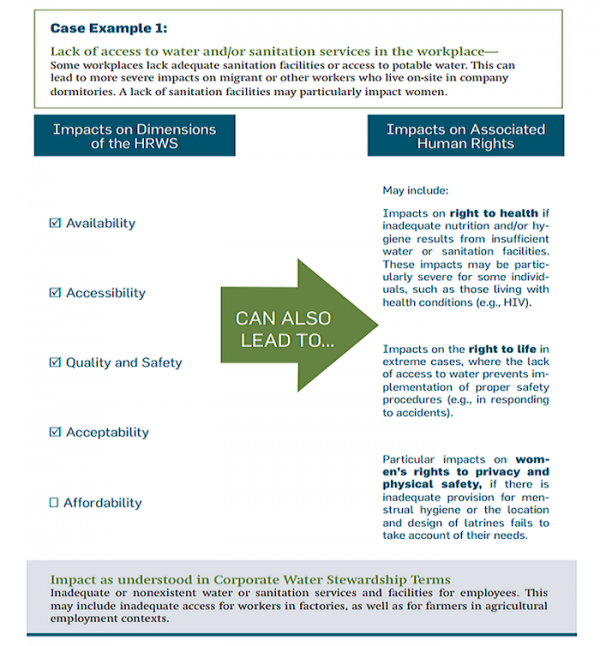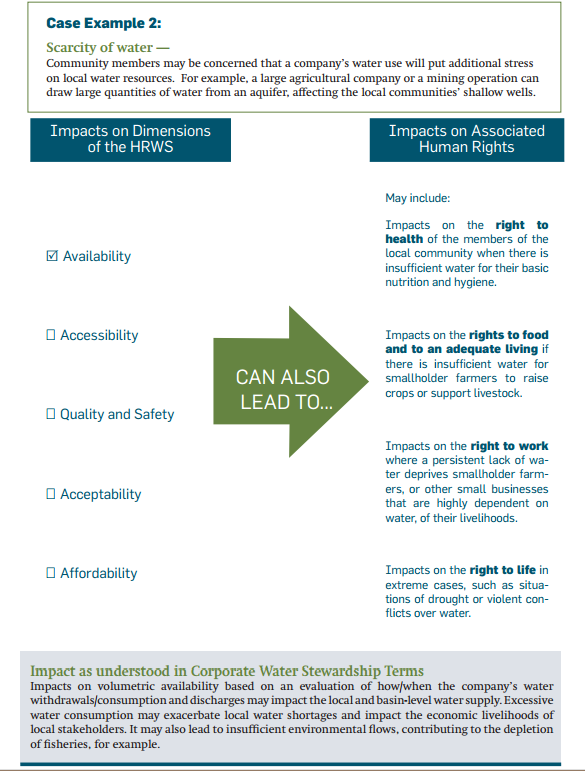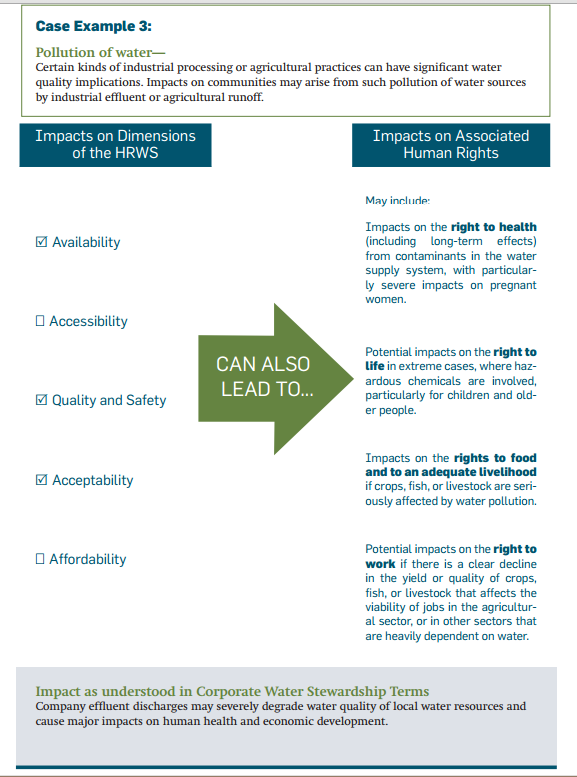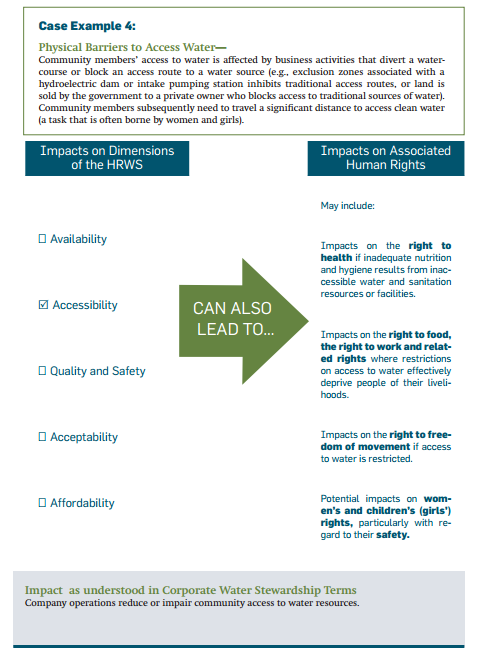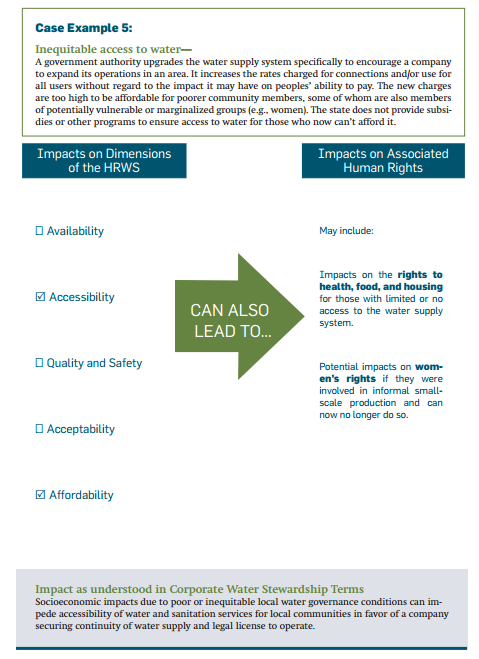What is different when a company brings a human rights lens to its water management efforts? At its core, this means focusing on water-related risks to people rather than water-related risks to the business. This means that company efforts to understand their actual and potential impacts need to take full account of the severity of such impacts on “affected stakeholders,” as defined in the UN Guiding Principles. This could include workers, local community members, or other individuals or groups whose rights may be negatively affected. These impacts may involve the HRWS, but they may also have an effect on other human rights, such as the rights to health, life, and food.
Many impacts on the HRWS start as less severe social or environmental impacts, so it can be helpful to consider impacts as existing on a continuum. Preventing less severe social or environmental impacts can therefore help prevent negative impacts on the HRWS, as well as prevent negative impacts on other human rights.
The case examples below seek to draw out the differences between the human rights and the water stewardship lenses in understanding impacts on people.


